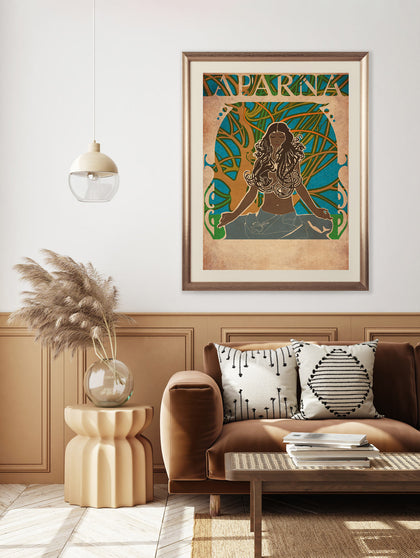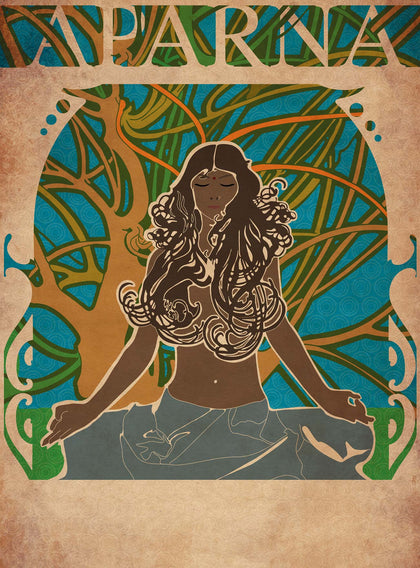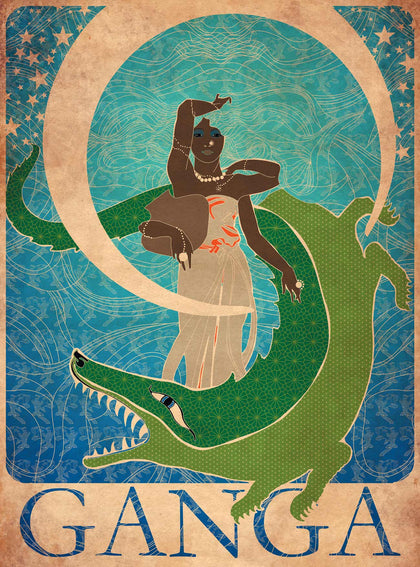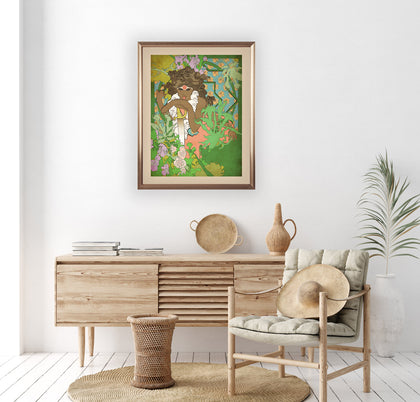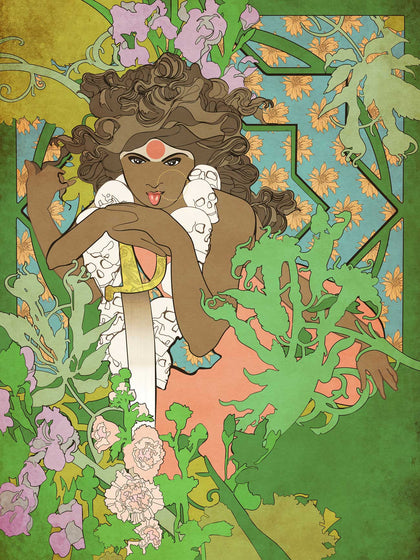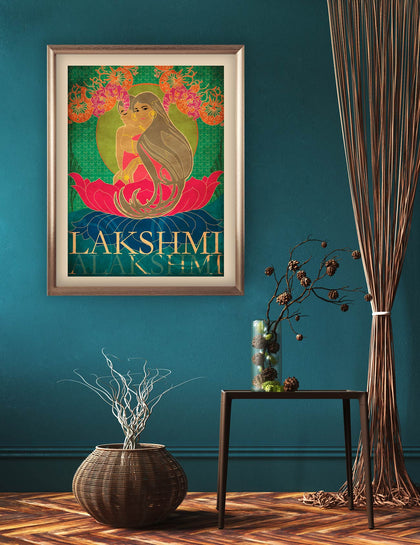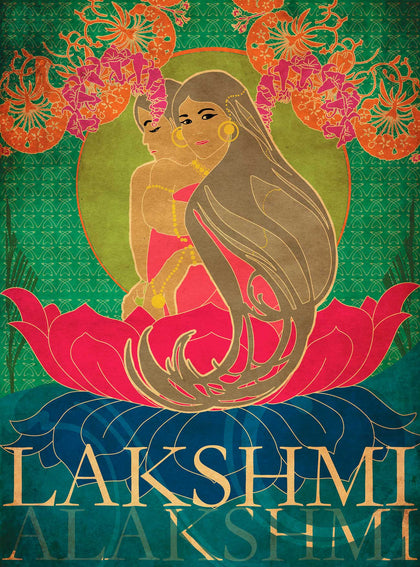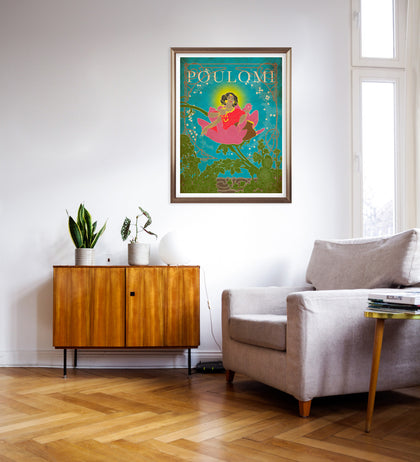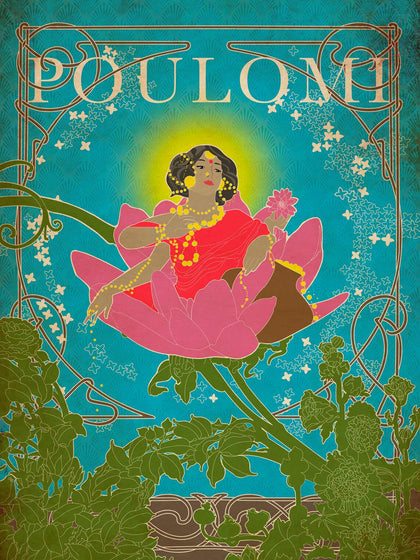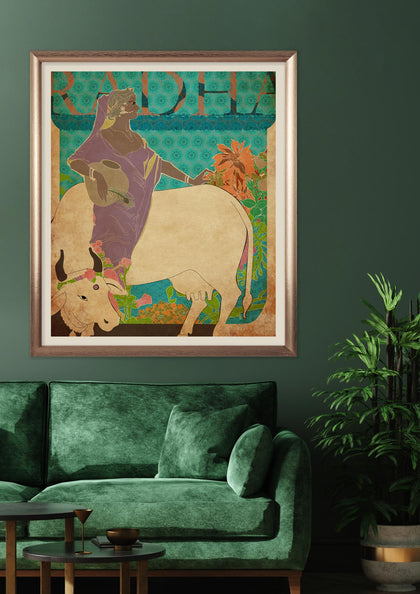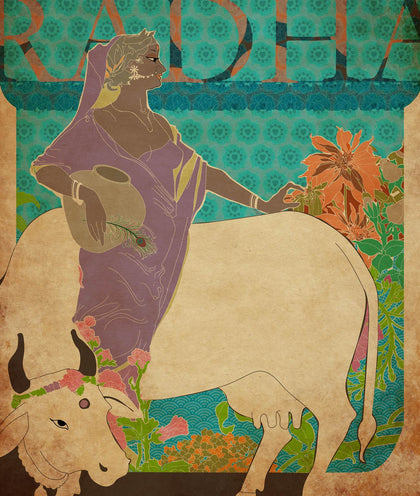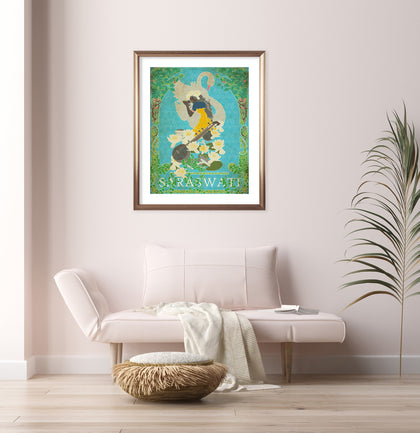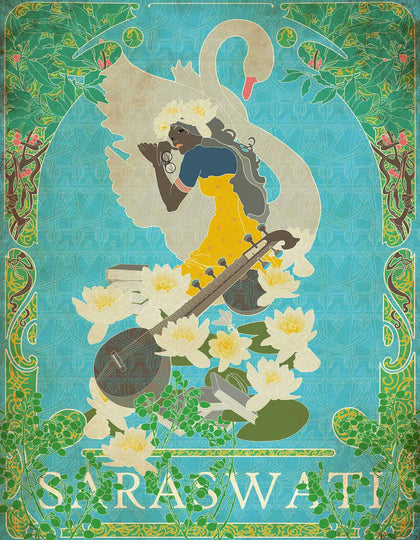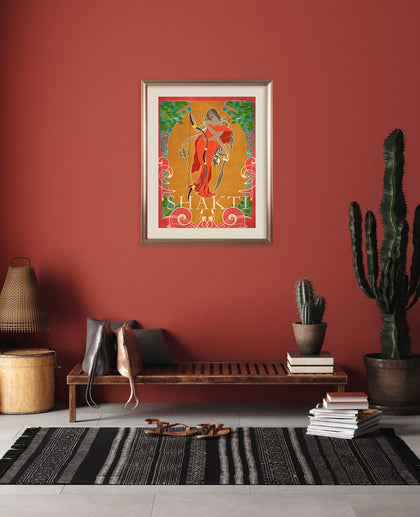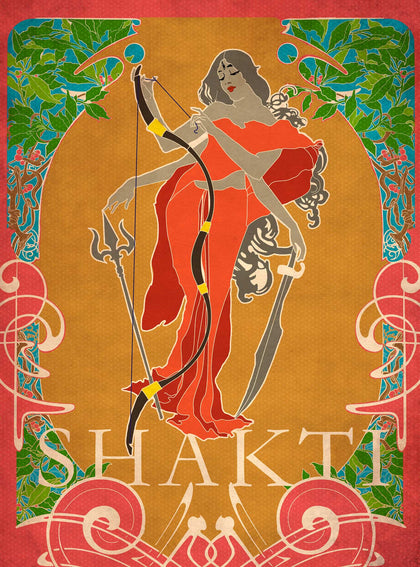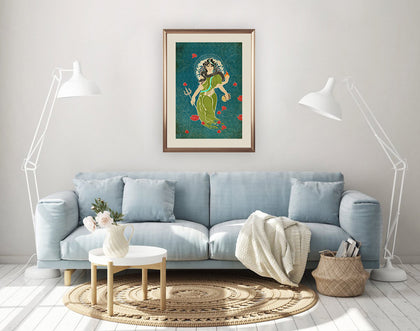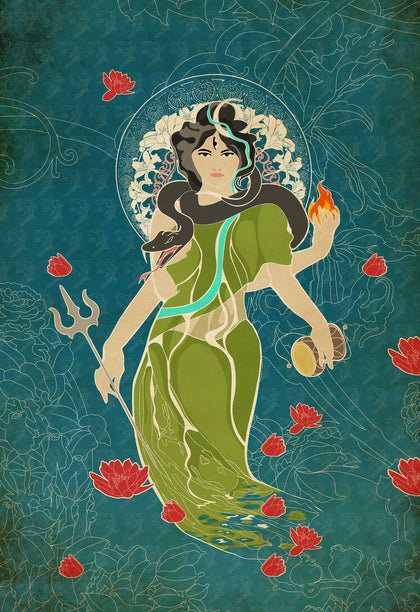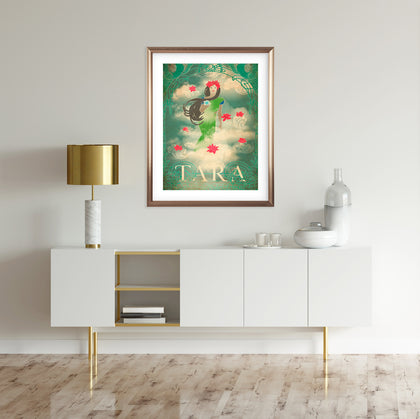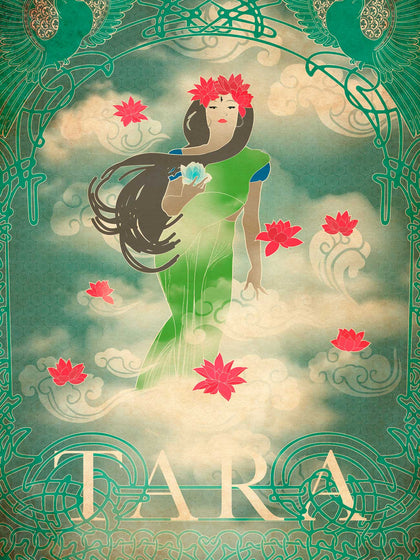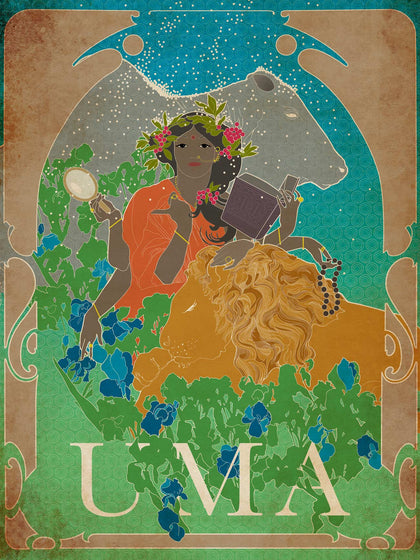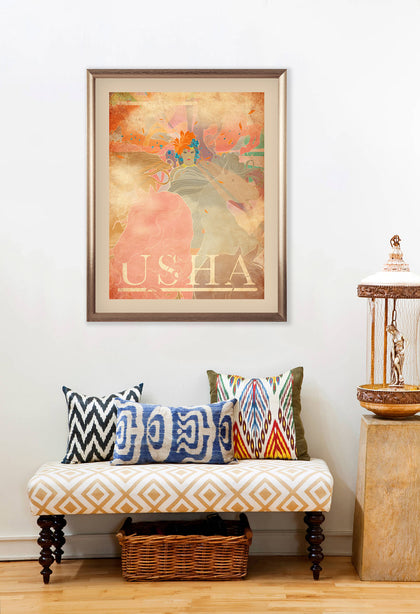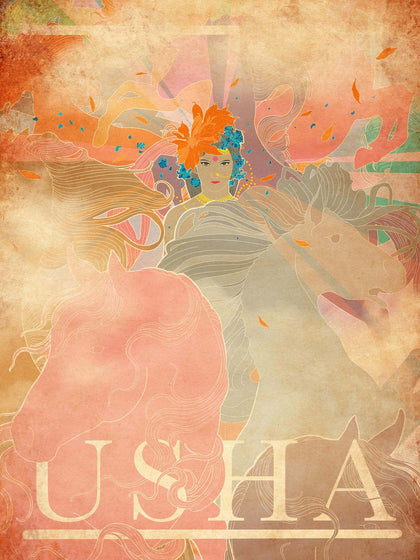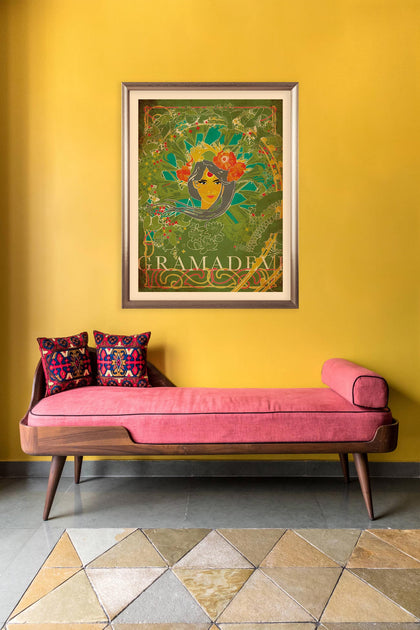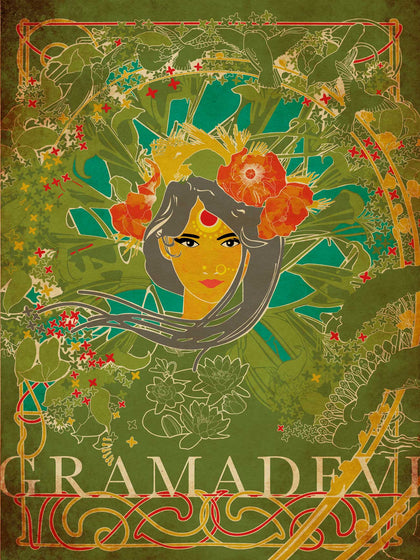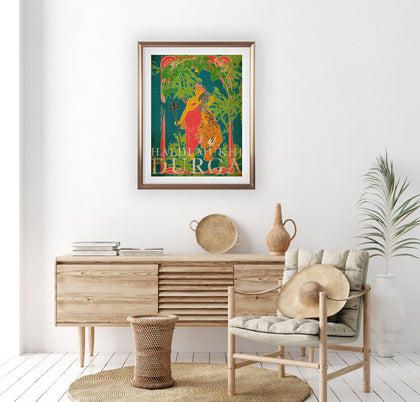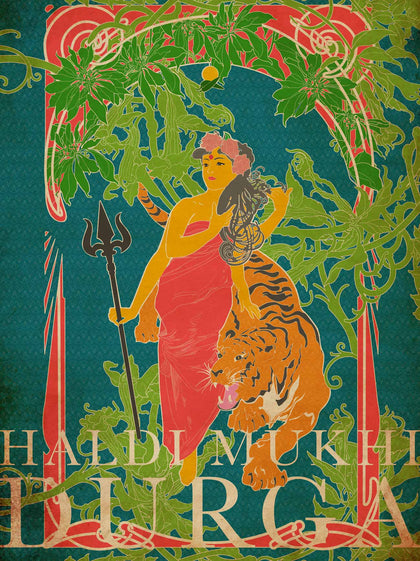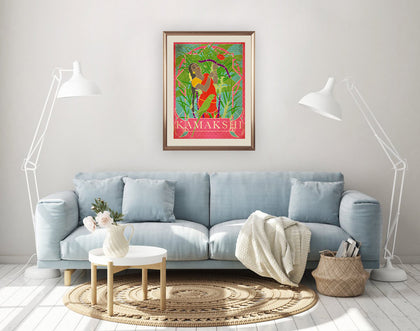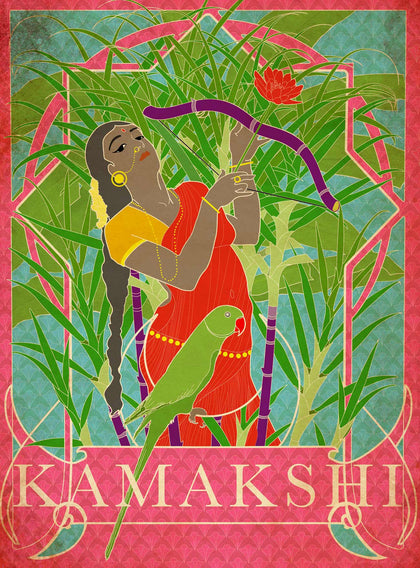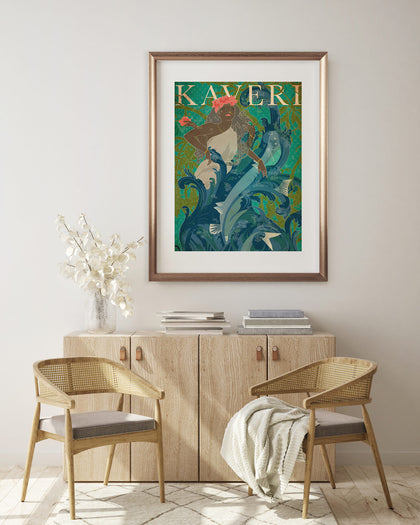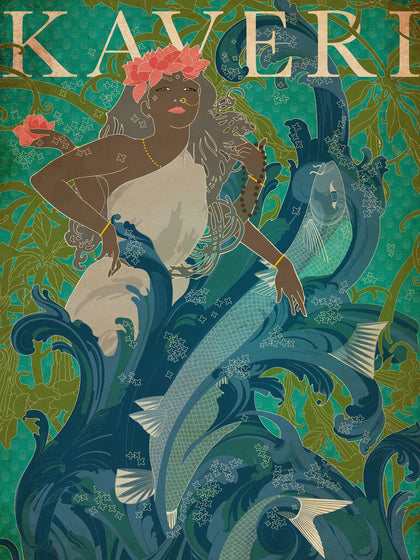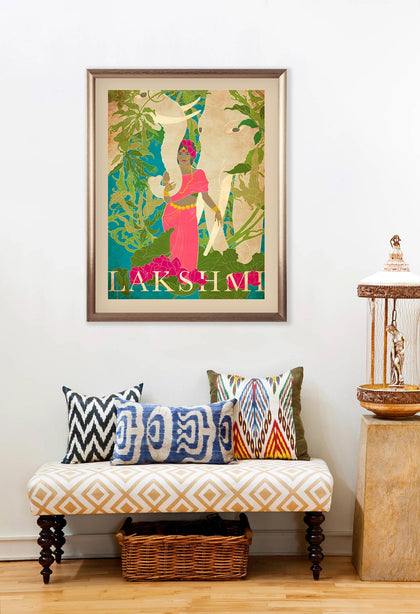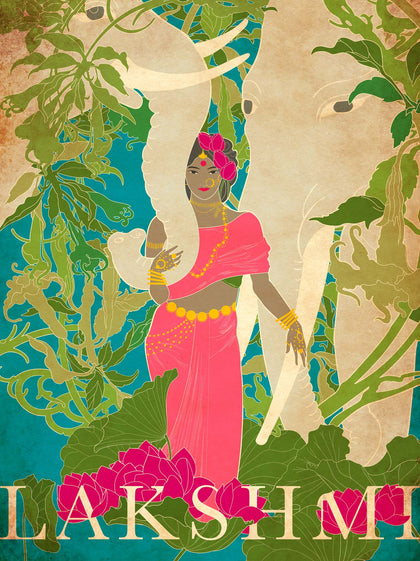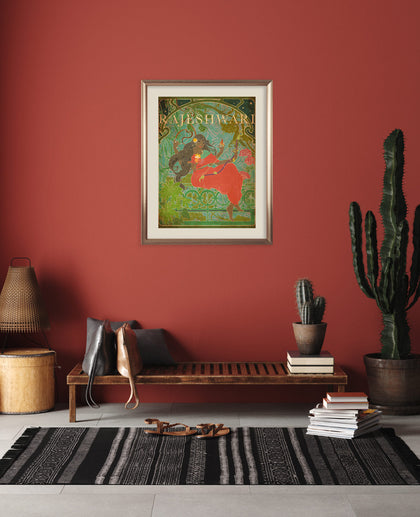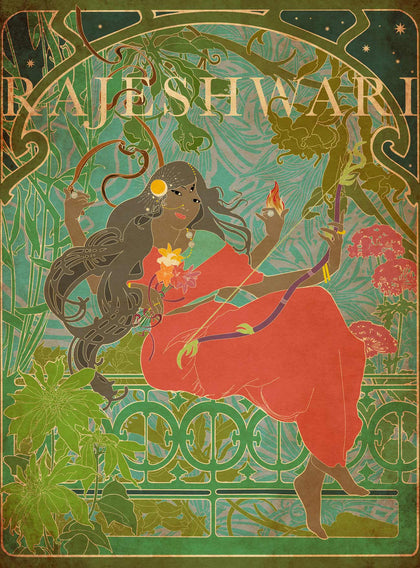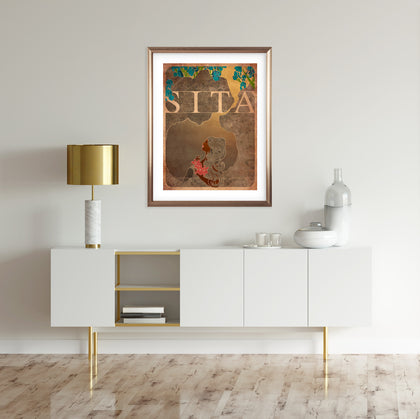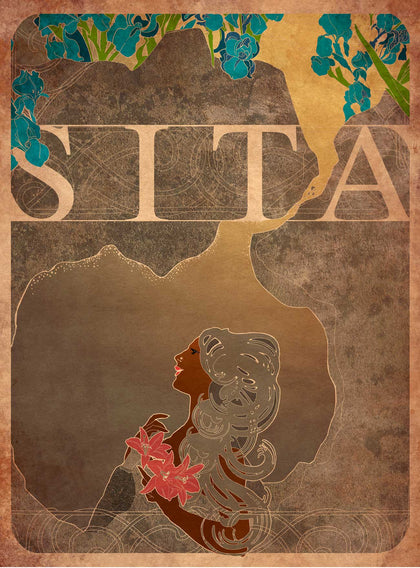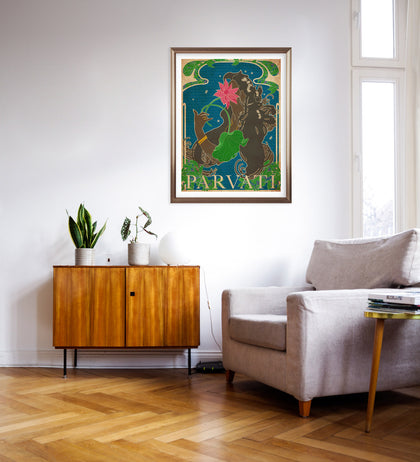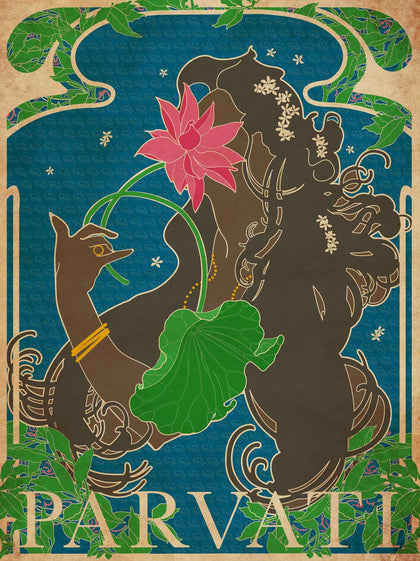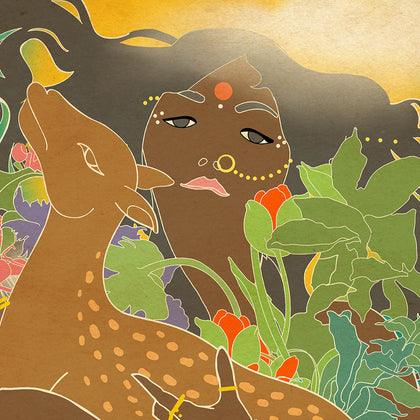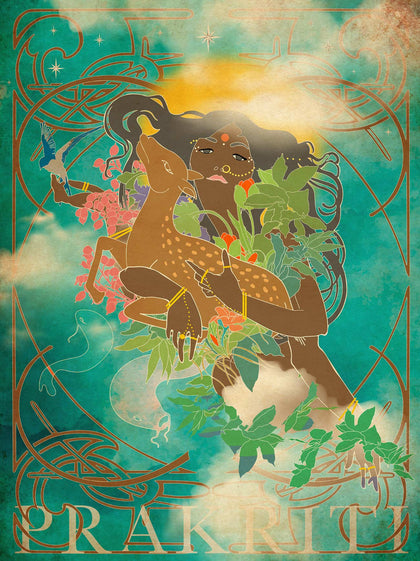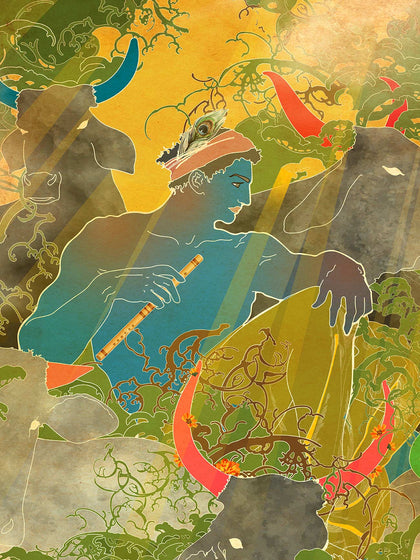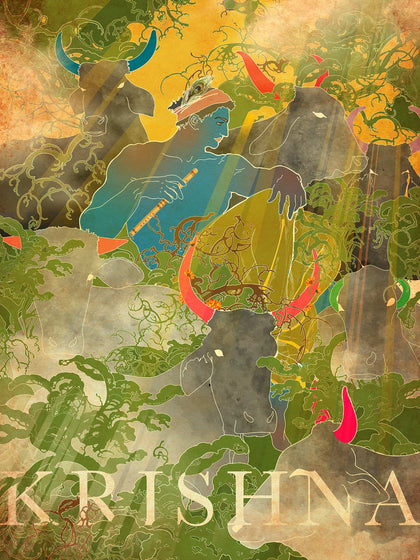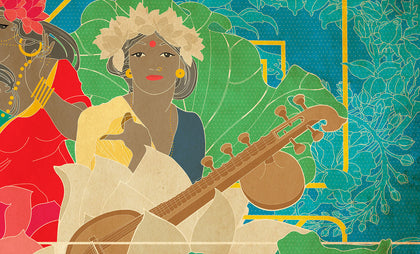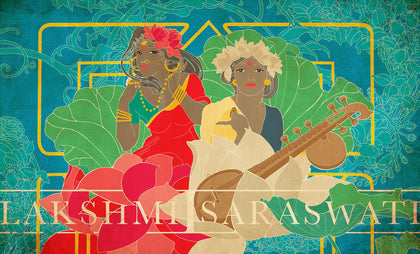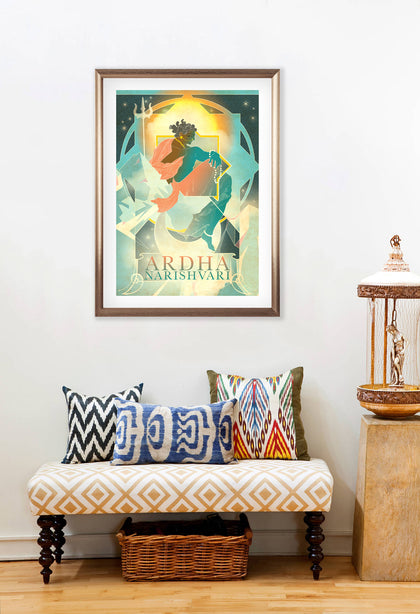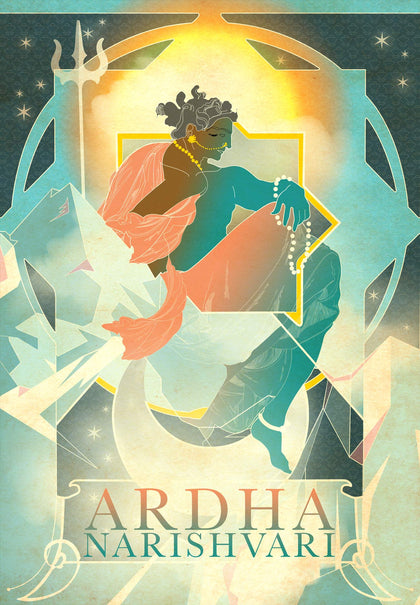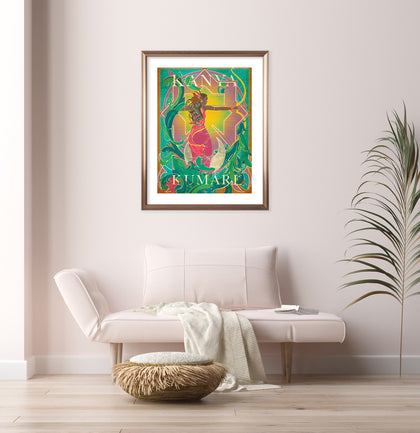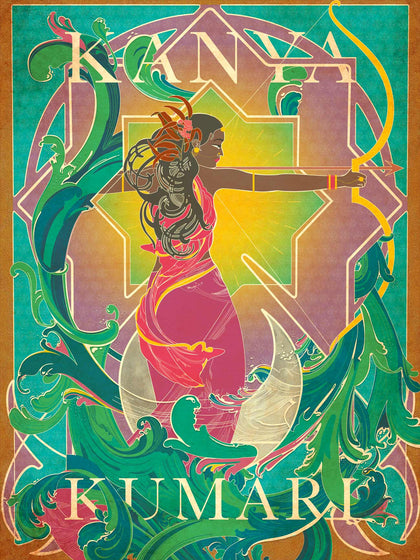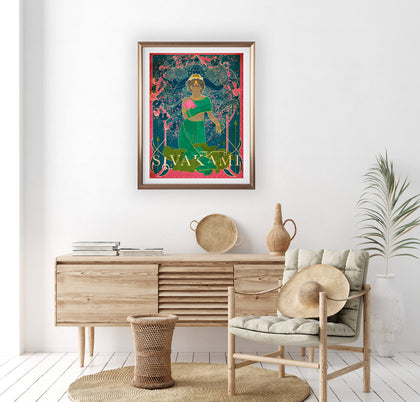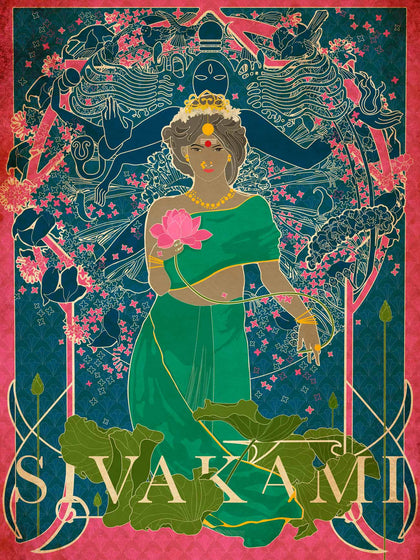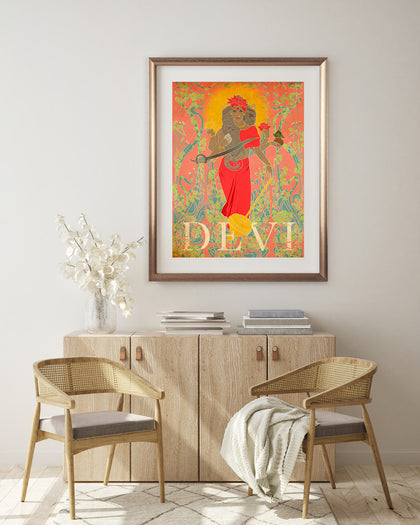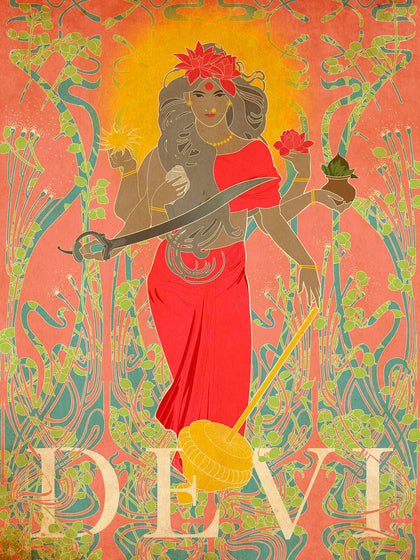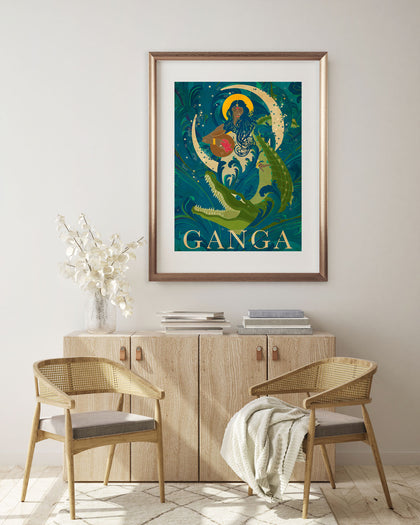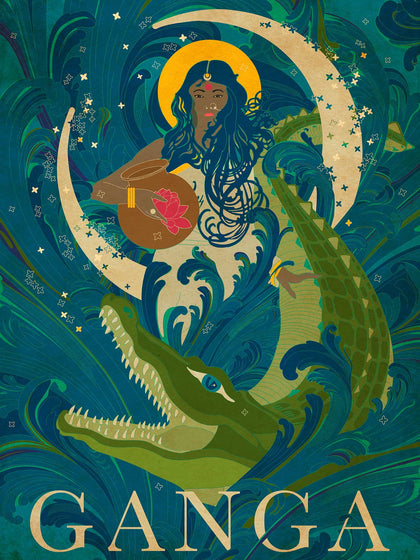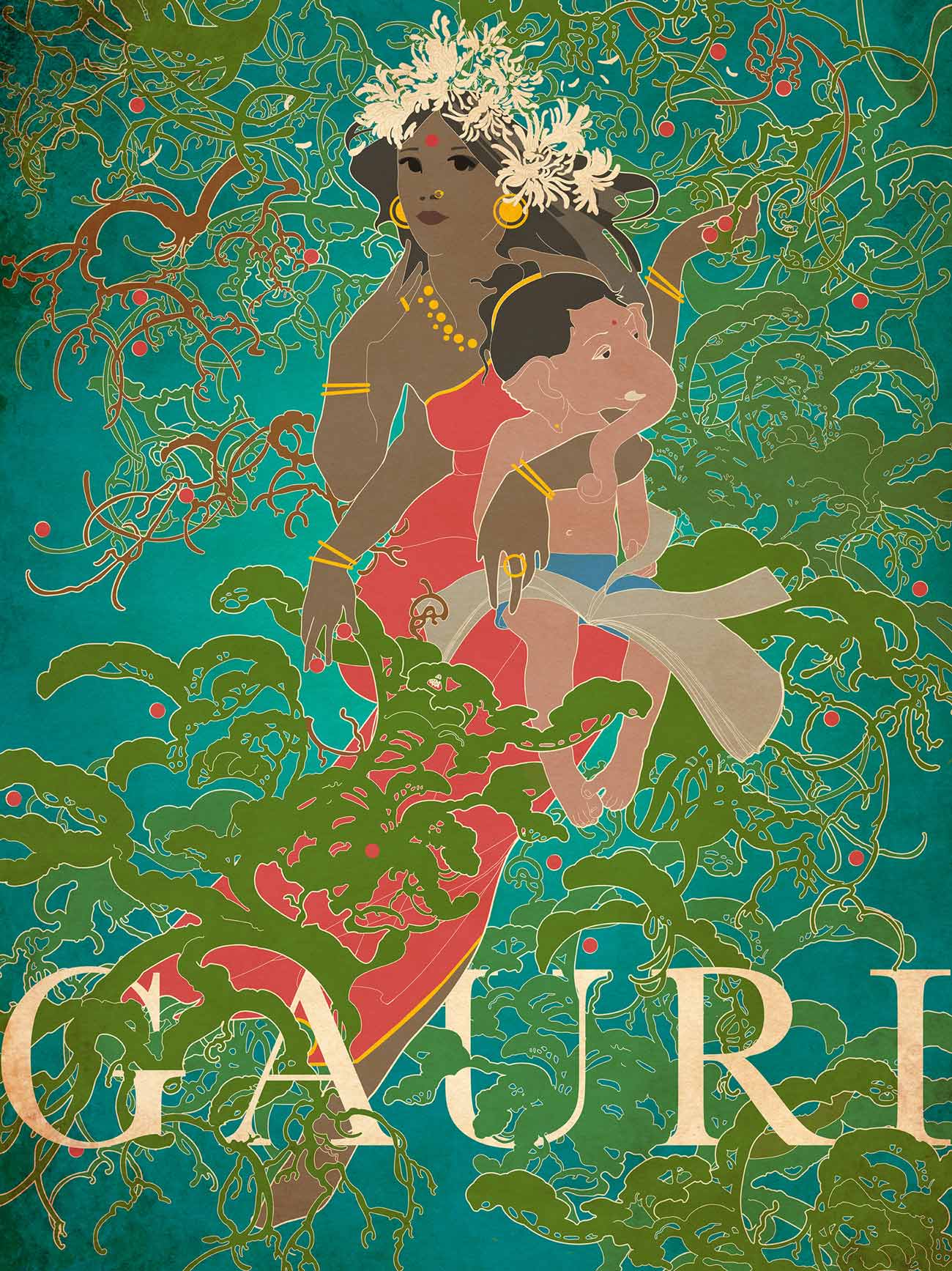Description
The quintessential mother goddess of Indian mythology wanted a child that she could call her own. Shiva, her husband (the god of destruction), didn’t see the purpose behind it. Children as a legacy, was a preoccupation for mortals – not for immortals like them. Gauri did not see children as legacy at all, but as life itself. They famously made love for a thousand years - a union that aided all of creation, but it didn’t result in a child for them. Gauri, although completely in love, was now aware that she would need to make one on her own.
While Shiva was away, she carved a perfect little boy out of turmeric, that she had rubbed from her own body. Breathing life into him she had brought Ganesha from the image behind her eyes to before them. He was entirely Gauri’s creation, and like all of nature – made from her soil.
Shifting rather abruptly from the poetic to the prosaic, shortly after being created by a goddess, the child was to stand guard while she bathed. The diligent new son did so with complete conviction to the task at hand.
So, when a strange little boy out of nowhere, denied Shiva entry into his own abode, the God of destruction with very little patience, decapitated Ganesha in anger. Gauri was horrified and appalled at what Shiva had done. He had killed her only child, and now, she (changing into Kali), was going to destroy all of creation. Brahma, the god of creation ran in its defence. Stopping the goddess, he pleaded with her to reconsider. And so she did - the world would be spared, only if the child was brought back to life, and was always worshiped first before any other god. Shiva now, less angry and more sympathetic, sent Brahma out with orders to bring back the head of the first creature he crossed, laying facing north. Brahma returned with the head of an elephant. Breathing new life into him, Shiva placed it on Ganesha’s body. In another version, it was Indra’s elephant. Either way, unique and irreversible, the elephant headed scribe was created. The birth of a new god willed into being by Gauri the mother goddess.
About the Series:
This artwork is part of the “Sister Misfortune” series, through which the artist, Smruthi Gargi Eswar, narrates lesser-known stories from Indian mythology, while reflecting on the narrative surrounding women in our culture. Various Indian goddesses (devis) are depicted with a refreshing artistic lens.
In India, there is a constant burden on women to be “Devi-like”. Through this series, the artist attempts a reverse deification of the goddesses, making them appear like real women, in a real world. The series is an exploration not just of duality, but of multiplicity. It compels us to question our attitudes - women towards themselves, men towards women. How does the idea of a goddess coexist within every woman? How do we, as a society, so casually dismiss, disrespect, disregard, and defile in our everyday existence, those who we have bedecked with gold and enshrined in a temple?

















































































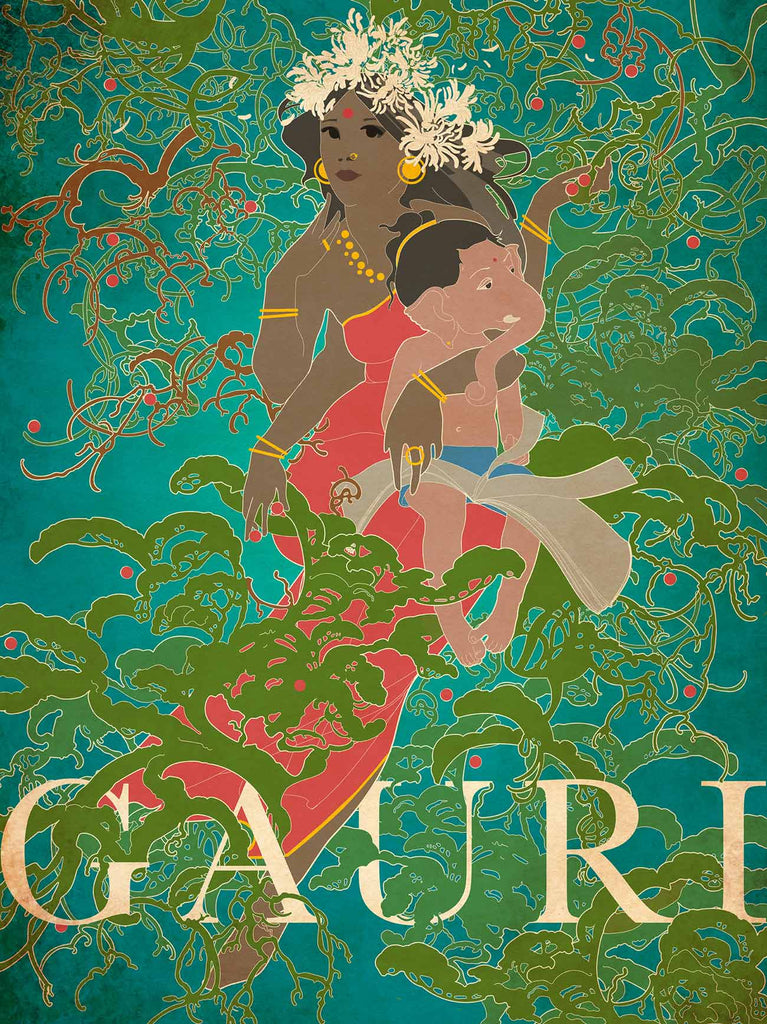
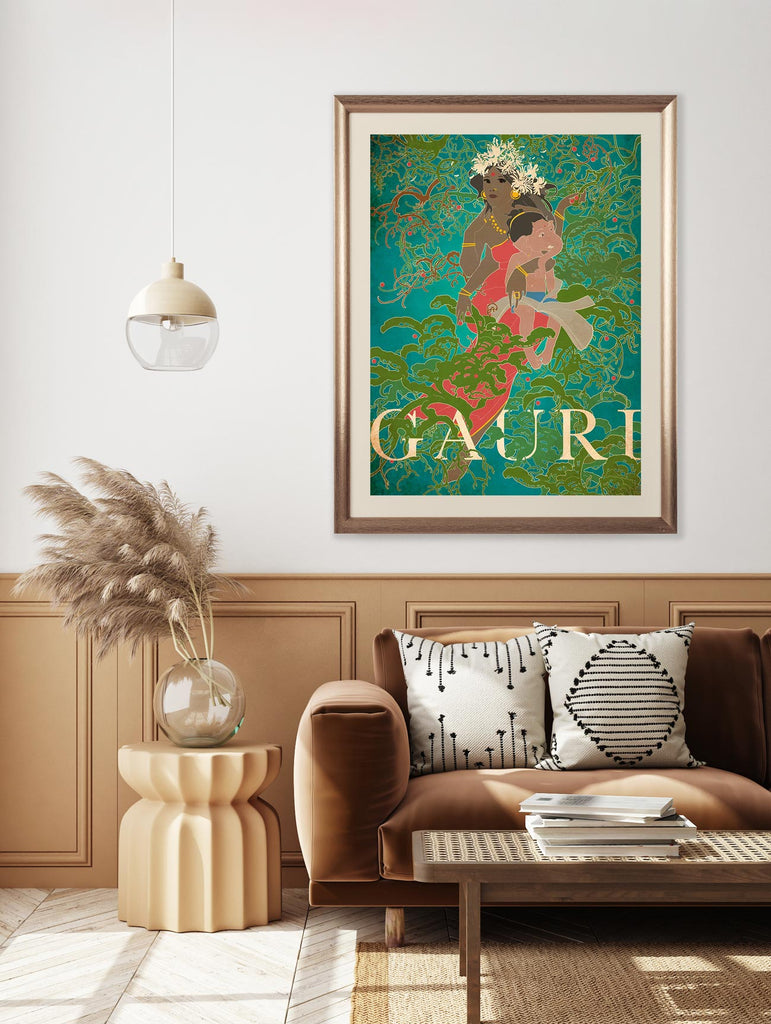



 View Full Screen
View Full Screen
